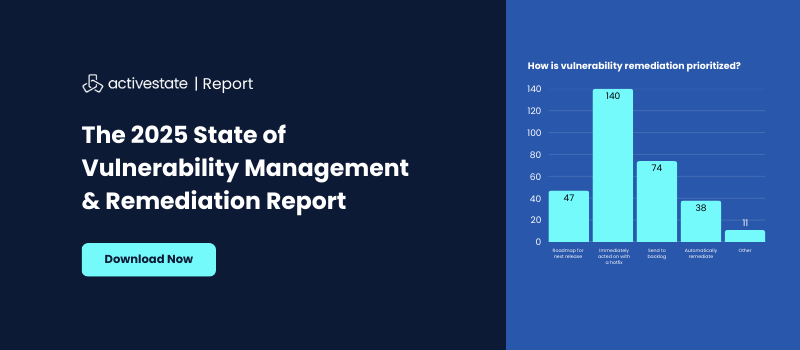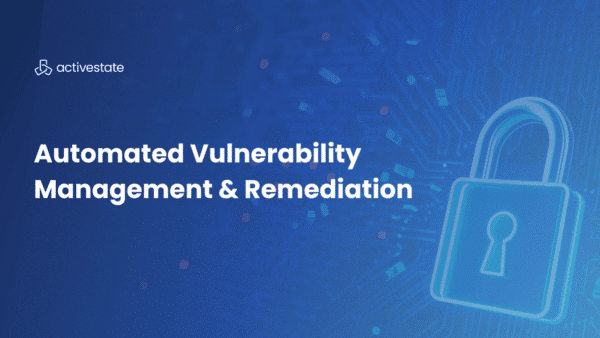Does it feel like your security and development teams are constantly dodging cybersecurity threats? For every vulnerability you manage to identify, prioritize and patch, you know there are dozens of unknown risks and vulnerabilities lurking in the depths of your organization’s code base. It’s a frustrating reality for many.
Teams performing vulnerability management “the old fashioned way” will be stuck in this endless cycle – likely never achieving total visibility over and security of their applications. This is because the status quo no longer works with our new reality.
GenAI, open source software, and a snowballing number of cybersecurity breach attempts have shifted the cybersecurity world as we know it. Now, teams need to take a modern approach: applying a combination of AI, automation and service to keep applications secure. That’s where Vulnerability-Management-as-a-service comes in.
In this article, we’ll explore why opting for security as a service can help your team overcome these mounting challenges.
What is Vulnerability Management as a Service (VMaaS)?
Vulnerability Management as a Service (VMaaS) revolutionizes how organizations manage open source and secure software delivery.
ActiveState’s end-to-end Vulnerability Management as a Service solution combines Application Security Posture Management (ASPM) and Intelligent Remediation capabilities with expert guidance. This enables DevSecOps teams to not only identify vulnerabilities in open source packages, but also automatically prioritize, remediate, and deploy fixes into production without breaking changes.
How VMaaS works to empower better risk management
So, how does VMaaS actually work to mitigate threats once deployed within your organization?
- Continuous vulnerability scanning: No matter how large your codebase is, VMaaS automatically scans and identifies potential vulnerabilities across networks, applications, and cloud environments, so you never have any surprises.
- Risk-based prioritization: Based on this ongoing threat intelligence, VMaaS leverages AI and analytics to assess and prioritize vulnerabilities within your applications.
- Automated remediation and patching: VMaaS’s automated security features integrate with your existing DevSecOps workflows for seamless and quick patch deployment.
- Compliance and safety reporting: VMaaS simplifies your regulatory compliance efforts with automated reports and audit trails.
Key benefits of adopting Vulnerability Management as a service
There are four clear benefits of using VMaaS to improve risk management within your organization.
Enhance your security posture
If your organization hasn’t experienced an attempted breach yet, it’s only a matter of time. Not investing in VMaaS security leaves you at an increased, and unnecessary, risk exposure. Investing in VMaaS and application security posture management (ASPM) allows you to:
- Proactively perform risk assessments across your applications.
- Perform real-time vulnerability detection and remediation.
- Reduce your vulnerability exposure.
- Quickly identify, manage and mitigate breaches or security issues when and if they do happen.
Improve operational efficiency
Manual security work is not just costly in terms of labor hours, but it also has a significant opportunity cost. It steals your team away from other valuable, strategic work they could be focusing on.
While security work is necessary, performing it manually isn’t. VMaaS – combining robust tooling with human experitise – streamlines operational efficiency across DevSecOps teams by minimizing manual security work and accelerating remediation timelines. A double whammy: Spend less time identifying security issues and resolve them quicker.
Get cost savings
Hiring more internal team members to manage increasing security risks adds to your overhead, potentially stealing budget from other important expenditures including new application development.
VMaaS helps you stretch your security budget farther. You’ll benefit from years of experience and economies of scale when you outsource this tedious work to vulnerability management tooling and experts, translating directly into cost savings.
Ensure scalability and flexibility
Your security needs are evolving, so why shouldn’t your solution also evolve with your needs? VMaaS helps you remain nimble and flexible – powerful tooling helps you self-serve your vulnerability management and remediation process when things are going swimmingly and human expertise can help expand your team’s capacity if there’s an important deadline or critical initiative that needs a more hands-on approach.
Whether you’re a small business, large enterprise, or in a phase of rapid growth, VMaaS meets you where you’re at now and can set you up for growth down the line.
Who should use VMaaS to improve their security posture
You should consider VMaaS if:
- Your enterprise manages complex IT infrastructures. Companies with large, complex codebases can find themselves drowning in security threats and updates. It can be incredibly challenging to figure out where to even begin fixing known (and unknown!) threats and issues. VMaaS helps you circumvent these challenges by leveraging a combination of real experience and security automation.
- Your DevOps teams are looking for automated security integrations. If you’ve already identified security automation as an ideal option for solving your security challenges, VMaaS is a comprehensive solution that can help you manage security workflows from end to end.
- You have a unique need that can’t be addressed out of the box. Seeking FedRAMP certification and need to address vulnerabilities in a short time frame? Managing a legacy application with previous versions of open source that are no longer supported by the community, alongside your modern cloud-based apps? Just need some best practice advice on the best way to approach your vulnerability remediation processes? VMaaS provides that perfect combo of software and human engagement to meet you where you are.
Final words: Why VMaaS
Vulnerability Management as a Service (VMaaS) is changing the security game, providing organizations with continuous monitoring, automated remediation, and expert-driven risk management.
As cybersecurity threats become more complex, relying on traditional, manual security processes is simply no longer viable. VMaaS empowers businesses to proactively protect their applications, streamline security operations, and optimize costs. All while ensuring scalability and compliance.
Organizations who choose to invest in VMaaS don’t just reduce vulnerabilities, they gain an edge with their security posture in an ever-evolving threat landscape. If you’ve been considering security automation, now is the time to explore VMaaS solutions and consider a more proactive approach.
As Scott Robertson, CTO, at ActiveState said, “DevOps teams tell us they spend tens of thousands of hours each year sifting through alerts, researching whether vulnerabilities are reachable and if fixing them might break current functionality, prioritizing what to fix first, and then making sure the work gets done. ActiveState’s Vulnerability Management as a Service zeroes in on these challenges, and acts as a DevOps co-pilot that removes the tedium and time-consuming nature of the tasks while giving them the control they desire to get the job done quickly and effectively.”
Explore the ActiveState platform, or book a demo with our team.








